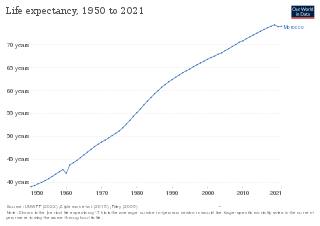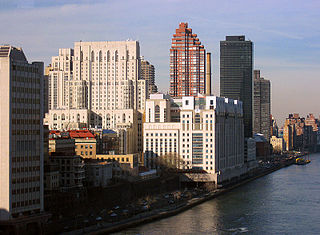
The healthcare industry is an aggregation and integration of sectors within the economic system that provides goods and services to treat patients with curative, preventive, rehabilitative, and palliative care. It encompasses the creation and commercialization of products and services conducive to the preservation and restoration of well-being. The contemporary healthcare sector comprises three fundamental facets, namely services, products, and finance. It can be further subdivided into numerous sectors and categories and relies on interdisciplinary teams of highly skilled professionals and paraprofessionals to address the healthcare requirements of both individuals and communities.
A real estate investment trust is a company that owns, and in most cases operates, income-producing real estate. REITs own many types of commercial real estate, including office and apartment buildings, studios, warehouses, hospitals, shopping centers, hotels and commercial forests. Some REITs engage in financing real estate. REITs act as a bridge between the worlds of housing and urban development on one hand, and institutional investors and financial markets on the other. They are typically categorized into commercial REITs (C-REITs) and residential REITs (R-REITs), with the latter focusing on housing assets such as apartments and single-family homes.

Johor Corporation (JCorp) is Johor’s principal development institution for the State of Johor, Malaysia. Headquartered in Johor Bahru, its operations extend across multiple countries including Malaysia, Singapore, Indonesia, Brunei, Australia, Thailand, Cambodia and Bangladesh.
The Industry Classification Benchmark (ICB) is an industry classification taxonomy launched by Dow Jones and FTSE in 2005 and now used by FTSE International and STOXX. It is used to segregate markets into sectors within the macroeconomy. The ICB uses a system of 11 industries, partitioned into 20 supersectors, which are further divided into 45 sectors, which then contain 173 subsectors.
Health care prices in the United States of America describe market and non-market factors that determine pricing, along with possible causes as to why prices are higher than in other countries.

Hillsboro Medical Center, formerly Tuality Community Hospital, is a medical care facility located in Hillsboro in the U.S. state of Oregon. The 167-bed facility was founded in 1918 in downtown and is one of two hospitals in Hillsboro, Washington County's most populous city. Since 2019, it has been operated by OHSU Health, and previously had partnerships with Oregon Health & Science University and Pacific University. At six stories tall, the main building was tied for the tallest in the city with the Hillsboro Civic Center as of 2006.
Private equity real estate is a term used in investment finance to refer to a specific subset of the real estate investment asset class. Private equity real estate refers to one of the four quadrants of the real estate capital markets, which include private equity, private debt, public equity and public debt.

Healthcare in Singapore is under the purview of the Ministry of Health of the Government of Singapore. It mainly consists of a government-run publicly funded universal healthcare system as well as a significant private healthcare sector. Financing of healthcare costs is done through a mixture of direct government subsidies, compulsory comprehensive savings, national healthcare insurance, and cost-sharing.

Morocco became an independent country in 1956. At that time there were only 400 private practitioners and 300 public health physicians in the entire country. By 1992, the government had thoroughly improved their health care service and quality. Health care was made available to over 70% of the population. Programs and courses to teach health and hygiene have been introduced to inform parents and children on how to correctly care for their own and their families' health.
Hammes Company is a healthcare consulting firm, providing strategic planning, facility development, and real estate advisory to the healthcare industry. Headquartered in Milwaukee, Wisconsin, Hammes Company grew from a real estate consulting firm founded in 1991 to the No. 1 developer of healthcare facilities in the United States by 2000. With the 2007 acquisition of Health Inventures, Hammes Company expanded its presence into worldwide markets.
The healthcare reform debate in the United States has been a political issue focusing upon increasing medical coverage, decreasing costs, insurance reform, and the philosophy of its provision, funding, and government involvement.

Primary Health Properties plc is a British-based real estate investment trust, specialising in the rental of flexible and modern primary healthcare facilities within the United Kingdom and Ireland. The company is listed on the London Stock Exchange and is also a constituent of the FTSE 250 Index

Healthcare in the United States is largely provided by private sector healthcare facilities, and paid for by a combination of public programs, private insurance, and out-of-pocket payments. The U.S. is the only developed country without a system of universal healthcare, and a significant proportion of its population lacks health insurance. The United States spends more on healthcare than any other country, both in absolute terms and as a percentage of GDP; however, this expenditure does not necessarily translate into better overall health outcomes compared to other developed nations. Coverage varies widely across the population, with certain groups, such as the elderly and low-income individuals, receiving more comprehensive care through government programs such as Medicaid and Medicare.

Icade SA is a multinational real estate investment trust (REIT) that is headquartered in Issy-les-Moulineaux, Paris, France and is a subsidiary of Caisse des dépôts et consignations. The name is an abbreviation of Immobilière Caisse des Dépôts. It invests in various types of properties including health care, offices, business parks, housing and public facilities. It is one of the largest property businesses of France. Icade became the leading commercial real-estate company for offices and business parks in the Ile-de-France region, is the largest REIT in healthcare sector of France and a key partner of major French cities. The main shareholders are the parent organization and Crédit Agricole.

Steward Health Care is a large private for-profit health system headquartered in Dallas, Texas. It utilizes an integrated care model to deliver healthcare across its hospitals and primary care locations, as well as through its managed care and health insurance services. As of the start of 2024, Steward operated 33 hospitals and employed 33,000 people in the United States. Steward's international ventures include Steward Colombia, which operates four hospitals, and Steward Middle East, which operates in Saudi Arabia and the United Arab Emirates. The company is currently engaged in bankruptcy proceedings.
Examples of health care systems of the world, sorted by continent, are as follows.
Health care finance in the United States discusses how Americans obtain and pay for their healthcare, and why U.S. healthcare costs are the highest in the world based on various measures.
Welltower Inc. is a real estate investment trust that invests in healthcare infrastructure. It is ranked 583rd on the Fortune 500. As of December 31, 2022, the company had investments in approximately 3,000 properties, all of which were in the United States, Canada, and the United Kingdom.
Target Healthcare REIT is a property company which invests in healthcare and holds a large portfolio of care homes. The company is listed on the London Stock Exchange and is a constituent of the FTSE 250 Index.











